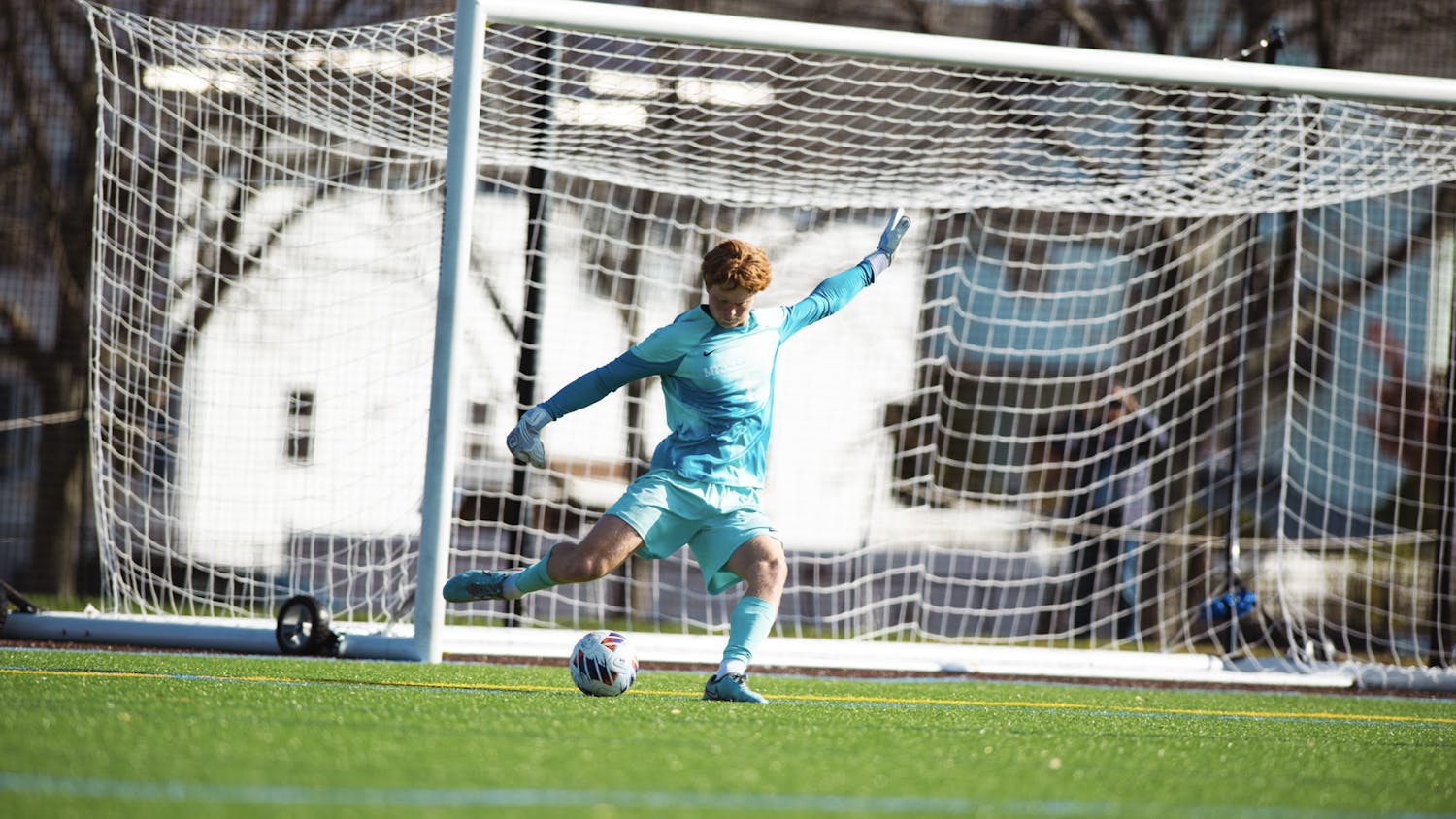This past Saturday, the men’s soccer team (5–0) routed the Trinity’s Bantams (1–3), continuing the Panthers’ undefeated start to the season with a 9–0 victory.
Within the first six minutes of play, Middlebury already had two shots on goal, one of which resulted in a score by Gavin Randolph ’26. Just a few minutes later, Eujin Chae ’25 knocked in his first goal of the season. The Panthers went on to convert another seven goals, including two from Eduardo Casanova ’26.5 and a second from Randolph. Middlebury’s stalwart defensive unit, who have kept Trinity scoreless in their last five matchups, held the Bantams to just one shot all game.
The team has claimed that youthful energy and the culmination of data-driven changes in playing style over the past few years are major factors contributing to their strong performances.
The Panthers’ boast a large crop of first year players (eight), some of whom are already making significant contributions on the field. One of the class of 2028’s standout players is Antonio Cosentino ’28, who has started in all four games this season, which the team’s captains said was a particularly remarkable feat for a defensive player in his first season.
Winger, Keagan Harder ’28, has also already found a role for himself and has scored two goals thus far.
“[Harder is a] super dangerous player. Vertically, he’ll go at any defender — he doesn’t care. If you’re a NESCAC All-American, he doesn’t care — he’ll go at you,” said Luke Madden ’24.5, co-captain of the team.
The team also attributes data analysis techniques to recent success. Over the past several years, the Middlebury men’s soccer team’s coaching staff have been doing independent research to analyze professional soccer matches. Using data, they cater practices to focus on drills that lead to more goals. They are able to identify areas of the field that lead to more assists, depending on gameplay, and create scenarios in practice to help players get comfortable positioning themselves in these areas that have been proven empirically to result in more scoring.
The transition to a data-driven approach to training has been a gradual process, and co-captain Shane Farrell ’24.5 said the system has really taken root this year. With an eager class of first years and upperclassmen who know the system already, it is clear why the Panthers have been winning games by larger margins than in past seasons.
When reviewing game footage, the coaches use software to count how many times players entered specific zones on the field and to determine how well the team is implementing the game plan. Madden told The Campus that the added level of structure makes it easier for him to play more freely, since he can be more confident in his decision-making because he knows the instincts the coaches train at practice are backed by data.
Farrell and Madden emphasized their confidence and excitement for this season. With 10 seniors on the team, a data-driven style of play and lots of energy from the class of 2028, they believe they can finish the job that was left incomplete last year. In the 2023 season, the Panthers bowed out of the NESCAC Tournament in the semifinals and lost in the quarterfinals of the NCAA Tournament.
“We really do think we're capable of winning the NESCAC and hopefully going all the way to the national final four,” Madden said.
The Panthers will test that dream soon enough: They have a road doubleheader this weekend, playing Amherst College (2–1) on Saturday and then heading to Connecticut to play Wesleyan University (3–0–1) on Sunday.
Jonathan Buchholz (he/him) is a Sports Editor.
Jonathan is studying International Politics & Economics, with a focus on Mandarin. He is a member of the club rowing team, Treasurer of the Middlebury InterVarsity Christian Fellowship, is a Residential Assistant, and has a community friend. He hopes to work in public service or consulting in the future.




